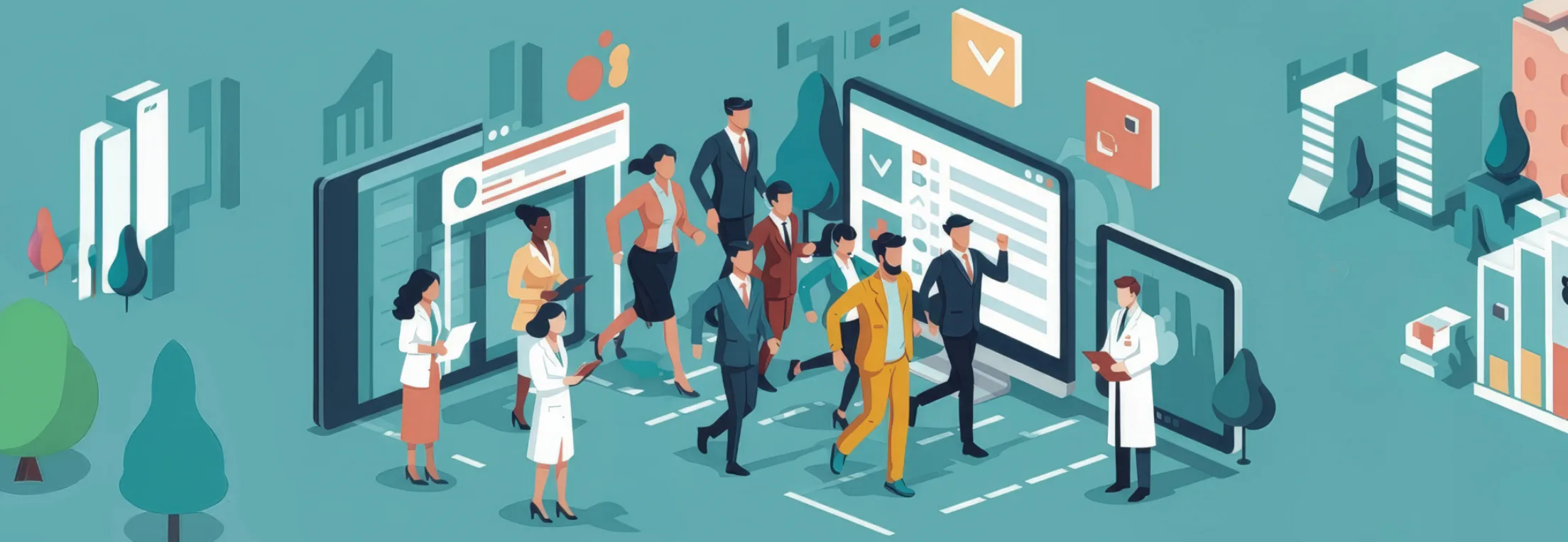Article:
Getting Started with Digital Accessibility: Small Steps, Serious Traction
Categories
Many organizations want to make their digital services accessible but don’t know where to begin.

On Global Accessibility Awareness Day, Anthro-Tech founder and CEO Suzanne Boyd hosted a webinar with two government leaders who’ve been promoting accessibility in their states:
- Janet Shimabukuro, Assistant Director of Customer Experience, Washington State Department of Revenue
- Becky Bean, Accessibility Consultant, Colorado Governor’s Office of Information Technology
They shared how they took their first steps, overcame challenges, and inspired lasting change.
Where to Start: Don’t Let Perfection Block Progress
Fear of not knowing enough often stops organizations from moving toward digital accessibility. Both Janet and Becky offered the same advice: Don’t let perfection block progress.
You don’t have to have it all figured out. It’s okay to start from where you are…something is better than nothing.
Janet began by reviewing a few internal services when she had time. She expanded her review as momentum and buy-in grew.
💡 Tip: Start with what you can control. Reviewing internal tools or updating one PDF that many people use can build momentum.
Becky said her journey started simply. She noticed a new accessibility bill moving quickly through the Legislature and flagged it as important in her regular communications work. By raising awareness early, she earned a leadership role in accessibility. This shows that anyone can help create change by sharing opportunities with decision-makers.
💡 Tip: Track accessibility trends. Spotting patterns and sharing insights with leadership can show that you’re a strategic thinker.
Making the Case: Connect Accessibility to Your Mission
Time and budget are common challenges. Connecting accessibility to your organization's values can be persuasive.
Janet shared how a deaf customer’s complaint led to a partnership with Gallaudet University students. Together, they improved accessibility through an affordable, resource-efficient contract.
Becky suggested clarifying how accessibility connects to core missions—such as voluntary tax compliance or responsible management of public resources.
Both speakers encouraged people to find allies within their organizations, team up with other workgroups, and include those who manage organizational change, risk, and communications.
💡 Tip: Use customer feedback as evidence. Complaints can make a strong case for change.
Building Momentum: Small Wins Lead to Lasting Change
Celebrating every success, no matter how small, keeps people engaged. Both organizations highlight wins in internal newsletters and meetings.
Colorado’s Department of Agriculture made accessibility tangible by challenging staff to remediate 100 documents in 100 days which turned progress into a game and sparked healthy competition.
Becky described “office hours” that started with 15 colleagues discussing challenges and sharing successes. Later, hundreds participated in these meetings each week.
💡 Tip: Gamify accessibility. Small, time-limited challenges make the work more engaging and visible.
Embedding Accessibility: Change Management, Governance, and Tools
Accessibility can become a daily practice with the help of committed leadership, policy, and practical support. Janet and Becky recommended organizational change models, like ADKAR (Awareness, Desire, Knowledge, Ability, Reinforcement), for identifying where teams need focus.
On the technical side, accessible document checkers, automated evaluation tools, and robust training are essential. For buying products and services from vendors, Colorado added accessibility requirements to its standards and contracts. State agencies now also have toolkits and checklists to help guide vendors.
💡 Tip: Use built-in checkers in Microsoft Word or Adobe Acrobat. No extra tools or budget needed.
Focusing Your Work on People
Compliance matters, and legal risks can motivate action. But Janet and Becky say it’s important to focus on people.
Sharing customer experiences and the story behind the numbers builds empathy and a sense of purpose. Becky said seeing accessibility’s effect on her family reminds her why this work matters.
Conclusion: Start Small, Act Now, Grow Together
Digital accessibility is a long-term cultural change, not a one-time checklist. Start with what you can, celebrate progress, and put people first. Janet and Becky’s stories show how small steps create lasting impact—and reveal why the work is worth it.
💡 Tip: Review a form, update an image’s alt text, or share this blog with a teammate. These are all ways to start building momentum.